Into the Wild: Travels in the Cévennes
Jennifer Ladonne winds her way through the craggy wilderness of the Cévennes national park, crossing paths with Robert Louis Stevenson
Over 12 days in the autumn of 1878, Robert Louis Stevenson and his capricious donkey Modestine walked 120 miles through the Cévennes, a remote French territory due north of Montpellier, where he met impoverished peasants, silent monks, and lonely shepherds while reflecting on the region’s history of outlaw Protestants and a child-devouring beast. On the way, he climbed rugged windswept peaks, beheld boulder-strewn waterfalls that tumbled into crystalline pools “of the most enchanting sea-green”, and slept out of doors under a darkness so profound he called it “night within night”.
A century and a half later, the Cévennes national park remains much as Stevenson described it in his book Travels With a Donkey in the Cévennes, and is still one of the darkest places on earth. So much so that in 2018 it was named an International Dark Sky Reserve, or “Réserve de ciel étoilé”, as the French more poetically call it. The park covers 361 square miles of France’s least populated countryside, a land inhospitable to highways, whose ancient expanse of ragged gorges, steep forested ridges, river-etched valleys and high-altitude plateaus still shelter a rugged way of life that has persisted for millennia. Home to dozens of protected plant, animal and bird species, including endangered eagles and vultures, the park may well be the closest thing to wilderness in France.
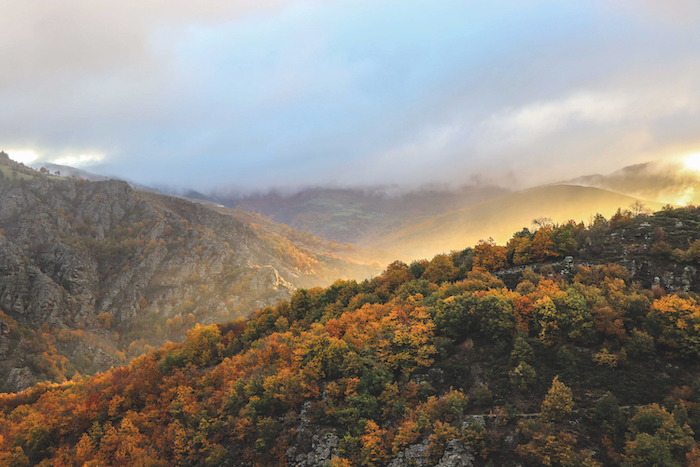
The Cévennes is one of the wildest parts of France
Its remoteness is exactly what drew me to the Cévennes, which lies about 90 minutes northwest by car from Avignon and an hour from Nîmes. But to call it wilderness may be somewhat misleading. A drive through the craggy windswept landscape, alternating between steep gorges and endless valleys, reveals a criss-cross of picturesque villages and crumbling stone fences hewn from the grey, tawny or pink-hued local granite and limestone so as to be barely discernible from the landscape’s natural rubble. It is a living relic of a nearly extinct agro-pastoral tradition – now a preserved UNESCO Cultural Landscape and Biosphere Reserve – where shepherds still drive their flocks into the mountains each spring, tend them through the summer months and know each animal by name.
In October 2020, I left Paris’s Gare de Lyon on the 6.37am train, picked up my rental car at the Avignon TGV station and was on the road by 10am, heading northwest to Les Vans, where the Monts d’Ardèche butt into the Cévennes at the north-eastern edge of the national park. A good place to start, this lively town offers a welcoming tourist office that stocks every kind of map, guide and events calendar one could desire (though not all in English) and at least four very good restaurants, including a gastronomic option with a Michelin star. The blackboard menu at La Feuille de Chou, on a tiny street just steps from the town centre, featured the kind of locally sourced dishes I was hoping for. The affable chef is a staunch defender of terroir and showcases the local bounty in his homey dishes – Picodon goat’s cheese, honey from the native black bees, the many wild mushrooms found here, olives and, of course, chestnuts, which I sampled in the form of a delectable cake served warm.
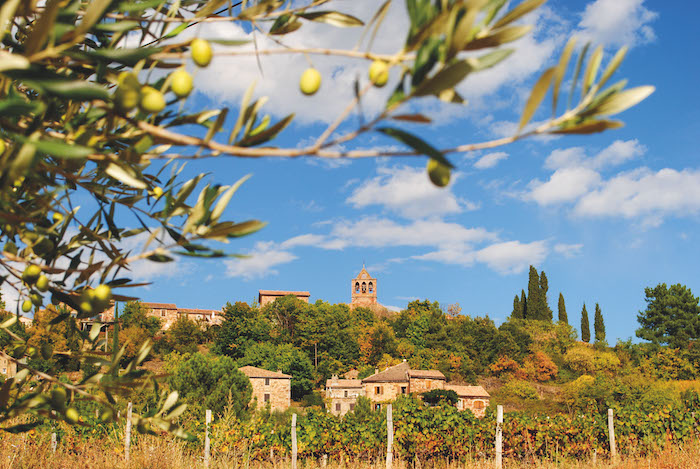
Picturesque Payzac. Photo credit ©LC-ADT07-Payzac
Les Vans lies at the eastern edge of the park just outside the Piémont Cévenol, one of the Cévennes national park’s five major mountain ranges, making it a good base from which to explore.
Driving along the D220, a dizzyingly steep road that snakes along the Massif du Tanargue, I was grateful that my amiable guide Mireille had offered to drive the regional tourist office’s wee electric car so I could enjoy a breathtaking stretch of scenery without plummeting over a sheer cliff. I marvelled at towering banks of pine interspersed with golden chestnut, beech and oak plunging into the Vallée de la Drobie, a rocky, meandering river, in an autumn mosaic of copper, vivid yellow and deep green. Our drive culminated at the Code Meyrand, rising 4,500ft with views across the Rhône Valley to Provence’s Mont Ventoux. Standing at the summit’s observation deck, I was struck not only by the stupendous views but by a silence so complete it added an acoustic vastness to the landscape’s visual majesty.
Fairytale landscape
Later, as we zigzagged our way through the Bois de Païolive, a landscape of scrubby oaks and ancient limestone boulders weathered into fantastical natural sculptures, I could appreciate its nickname ‘forest of the fairies’. It seemed this enchanted forest, a favourite hiking place for families during the autumn holidays, had worked its magic: the parking areas along the way were full but there was barely a soul to be seen.
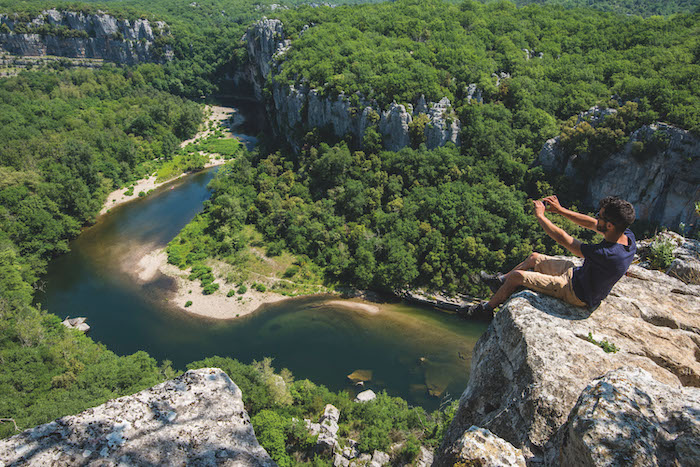
The spectacular Gorges du Chassezac. Photo credit © Matthieu Dupont
Back in Joyeuse’s medieval fortified old town, I strolled past a dignified 12th-century church to Castanéa, the chestnut museum, to unlock the mysteries of the tree that for centuries has provided the Cévenols’ most lucrative commodity. I learned that the Cévennes harbours more than 20 varieties of sweet chestnut with evocative names like Bouche de Betizac, Belle Épine and Figarette. The texts were all in French, but visitors can get the gist without workable French through diagrams, models, videos and a collection of antique tools, including a menacing pair of spike-soled shoes ingeniously designed to remove the nut’s spiky outer skin. Everyone comes away with a tube of sweet chestnut paste.
Joyeuse is also known for its namesake macaron, a crisp almond cookie whose recipe has remained a well-guarded secret since the 16th century. At Maison Charaix you can buy them fresh or tinned along with a selection of chestnut delicacies: sweet biscuits, marrons glacés and crème de marrons.
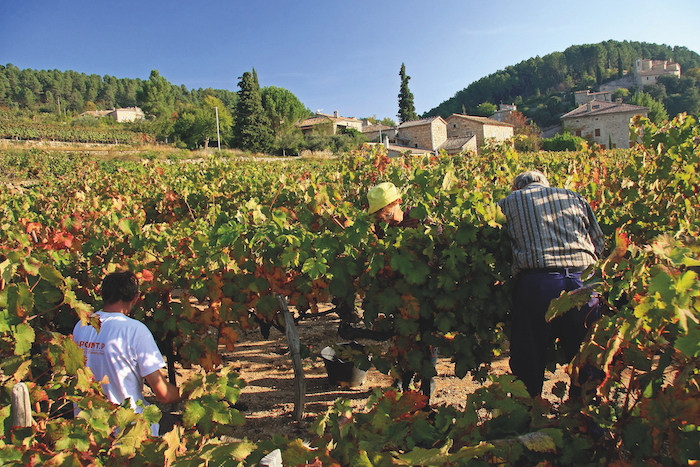
The Chatus grape harvest. Photo credit © M.Rissoan
Abundant harvest
The month of October is hands down the best time to appreciate the astonishing abundance of this versatile nut. The trees’ turning leaves not only gild the forests, everywhere you walk the barbed skins and nuts crush underfoot. Alongside the prodigious chestnut, grape vines and silvery olive trees line the steep hillsides in stepped groves. There are 26 native olive species grown in this semi-arid Mediterranean climate, according to Jocelyn Vigouroux, of Domaine Le Pigeonnier, fourth-generation producers of olive oils and tapenades on their 300-acre estate.
Wine is another newly revitalised commodity. Since 2008, Élise Renaud and Benoît Salel have cultivated typical Rhône Valley grape varieties at the Domaine Salel & Renaud alongside little-known native species they are intent on reviving: Dureza, Raisaine, Picardan and the distinctive Chatus. I jumped at the chance to sample their wines at the winery, set in a steep wood off a narrow twisting road with views over a blue-tinged valley and the vineyards below. In their cosy kitchen, warmed by a wood-burning stove, we sampled four reds and four whites, including Qué Sa Quo, a deliciously floral Viognier, and the earthy, mildly tannic Le Temps Qui Reste, made with 100 per cent Chatus. The next evening, this same red wine arrived beautifully paired with a plate of aged Picodon cheeses from local artisans Élevage du Serre at dinner at the Mas de Baume, my hotel for the night.
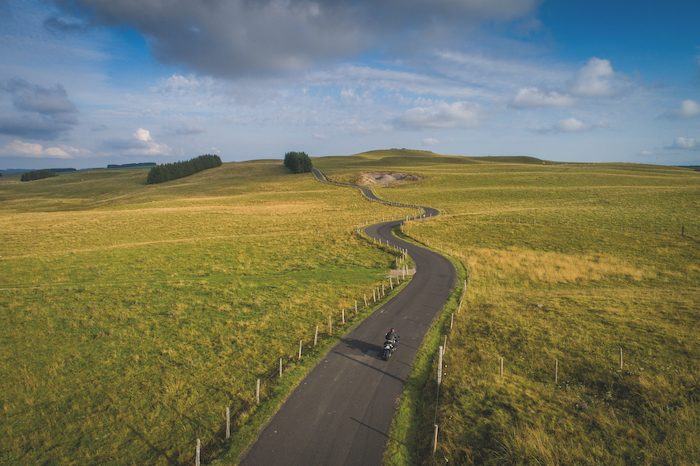
One of the many stunning roads you can take through the park. Photo credit © R .Domergue
Village life
‘Perched’ village does not quite describe the giddy heights of Thines, a ‘lost and wild’ medieval hamlet set perilously on a cliff overlooking a vast stretch of the Tarn Valley. The serpentine drive up the D513 alone is worth the trip, as it winds its way up alongside the Thine River’s storybook pools and falls. Visitors (gratefully) leave their car at the parking area below the village for a picturesque 15-minute walk through dense chestnut forests to arrive at the Maison du Gerboul, equal parts visitor centre, café and gift shop. Along with truly a breathtaking panorama, Thine’s exquisite 12th-century Romanesque church and picturesque cemetery are the stars of the show. There’s also a monument to a band of Second World War Resistance fighters who, betrayed by a mysterious stranger, were murdered by the Nazis in 1943.
From Les Vans, I headed west toward Mont Lozère on the D901, a steep road progressively more sinuous and beautiful the closer you get to Le Bleymard, a stop on Stevenson’s route and my destination for the night. But first a detour to moody La Garde-Guérin, a beautifully restored medieval village set on a windswept plateau overlooking the Gorges du Chassezac. The village was founded by the Chevaliers Pariers, a sort of medieval police force, and was a vital market town and a major stop along the Chemin de Saint-Gilles, the medieval world’s fourth most important pilgrimage route. Garde-Guérin’s graceful Église Saint-Michel is another Romanesque jewel topped by a clocher à peine, the horizontal comb-shaped bell tower characteristic of Cévenol churches of the Middle Ages. The romantic ruins of the village’s ancient castle are a fine spot from which to take in endless views of the gorges.
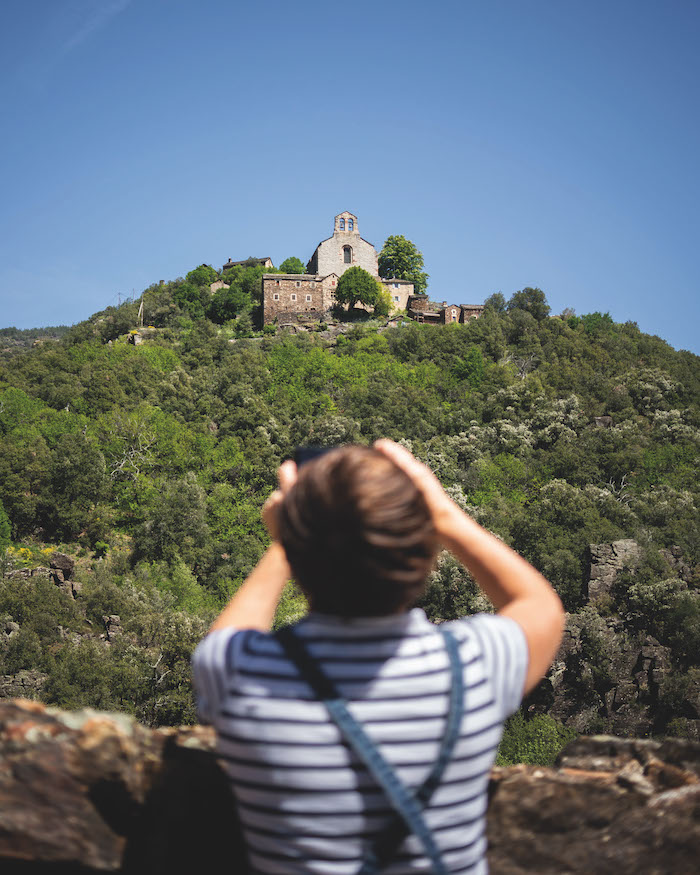
The perched village of Thines is a must-see. Photo credit © Borre Zimmermann
Another good reason to stop here is the Comptoir de la Régordane, a loft-like rustic-gourmet restaurant where I feasted on wild trout (the Cévennes is one the last places in France where these sensitive fish still survive) and stocked up on edible delights made by local artisans. My hotel at Le Bleymard, whose restaurant walls were bedecked with portraits of Stevenson’s companion Modestine, was the closest I would come to crossing paths with the Beast of Gévaudan, a giant wolf-like creature that terrorised the region and fascinated the world for three years from 1764. Before being (allegedly) shot by a marksman sent by Louis XV, the beast brutally dispatched at least 113 Cévenols, with a particular taste for children, and left dozens of survivors as witnesses to the creature’s authenticity, if not its true identity.
But it was another beast, Covid-19, that would determine the course of my visit. I rushed back to my room after dinner just in time to hear President Macron announce France’s second lockdown, beginning at midnight the next day. My next hotel confirmed it would stay open for one final night – with dinner – but after that everything would shutter, lopping three precious days off my trip.
Careening down the wildly curving D20 the next morning was also the closest I would come to crossing Stevenson’s path. Here he climbed the rock-strewn and windswept Sommet de Finiels 5,600ft to the top of the Mont Lozère massif on his way to the hamlet of Le Pont-de-Montvert, all the while ruminating about the protestant Camisards, who fought a bloody guerrilla war in “that indecipherable labyrinth of hills” for two years against the king’s soldiers. Though it was too cloudy to marvel at the views south to the Mediterranean and east to the Alps, my own solitary walk posed a lovely, lonely vista.
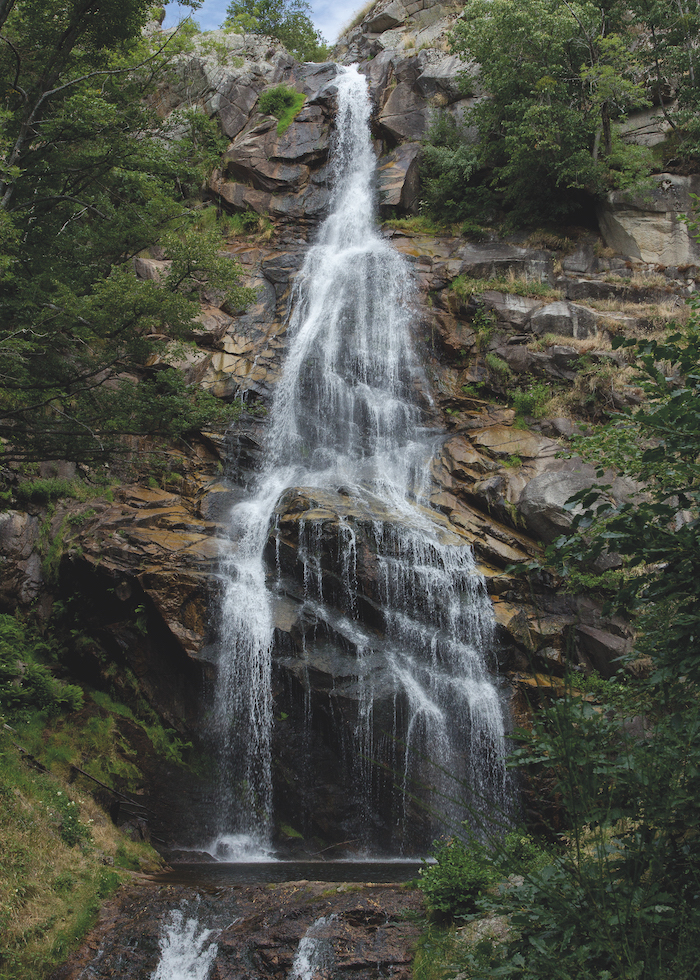
The Cascade of runes in the Mont-Lozère massif. Photo credit © Fred Julien
Let’s get lost
A GPS is a many splendoured thing when travelling alone, but when it goes wrong, it can go very wrong. A much-anticipated late-morning hike with a local guide was scuppered when my GPS whisked me past our meeting place to a hairpin curve three kilometres down the road. I suspected this was a mistake, but a U-turn on this leaf-strewn one-lane (but two-way) road engulfed by dense forest, was not an option. Arriving at an impossibly picturesque stone church with glorious vistas over the valley – the minuscule Église de Saint-Andéol – I could finally turn around and find my way back to the rustic café where I was to meet my guide, already long departed.
This was not my day. Headed toward my next destination, the Cascade de Runes, the Cévennes’ highest waterfall near Le Pont-de-Montvert, I was led to another tiny road that twisted crazily through forest, valley and steep hillsides extending an easy 15-minute trajectory by more than an hour. Go with the flow, I thought (a turnaround being quite impossible anyway), and sure enough the drive turned out to be a splendid detour on my trip, miraculously completed without meeting another car, which would have required a long and perilous backward retreat.
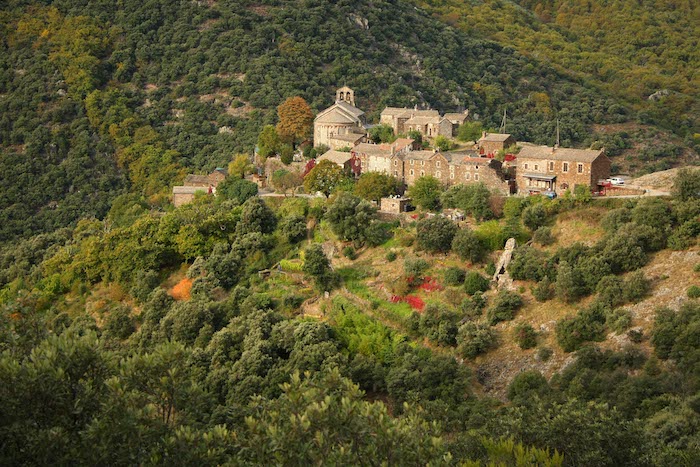
La Garde-Guérin. Photo credit © S.Bugnon
The roaring, 230ft-high Cascade de Runes was as magnificent as promised and Le Pont-de-Montvert, at the confluence of the Tarn and Rieumalet rivers, as pretty as a postcard. In the late afternoon, I rejoined the D998, by now my favourite route, to traverse another dramatic stretch of cliffs and forest ablaze with autumn colour and plunging toward the boulder-strewn Tarn. Passing the storybook Château de Miral, I arrived before sunset in the hamlet of Cocurès. As I took in a deep magenta sunset over the village from the balcony of my cosy wood-panelled room at La Lozerette, a snug century-old family hotel run by three sisters, I felt lucky. But luckier still at dinnertime in La Lozerette’s spacious dining room over the best meal of my trip, presided over by Pierette, one of the three owners, who served me stellar glasses of local wine from an inch-thick wine list covering every region in France with an emphasis on natural wines.
A reason to return
On the morning of my last day, I hurried off to nearby Florac to the UNESCO park headquarters and the Maison du Tourisme et du Parc National des Cévennes, seat of the national park, two vital resources for visitors, which would be closing for lockdown at noon.
At Maison du Tourisme et du Parc National des Cévennes I learned about the park’s tremendous natural diversity and array of outdoor activities. The park encompasses a mind-boggling 5,000 miles of marked trails and 30 cycling circuits, along with equestrian routes, canoeing, kayaking and paddling (with guided night visits for beaver-spotting), swimming and trout fishing in its pristine rivers and dozens of world-class caves to explore.
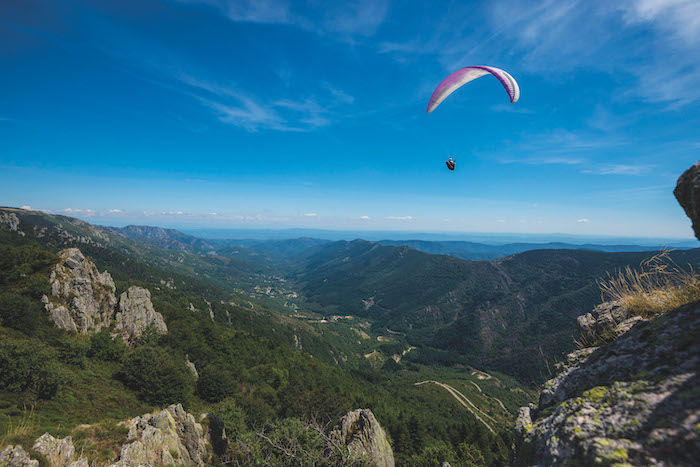
Paragliding at the Col de Meyrand is a great way to really make the most of the views. Photo credit © Matthieu Dupont
Daring souls can traverse canyons at dizzying heights on a slackline or paraglide among the raptors. Guides for everything from mushroom scavenging to spotting the park’s many birds or wild orchids are all to be found here.
At UNESCO, visitors can learn all about transhumance, a protected agro-pastural way of life, which has been practised intermittently in the Cévennes for 3,000 years and has been done so continuously since the Middle Ages.
I didn’t weep when I returned my car, as Stevenson had after parting with Modestine at the end of his journey, yet thinking back over all I’d seen – and all I’d missed – I knew that I was far from done with the dramatic and fascinating Cévennes.
From France Today magazine
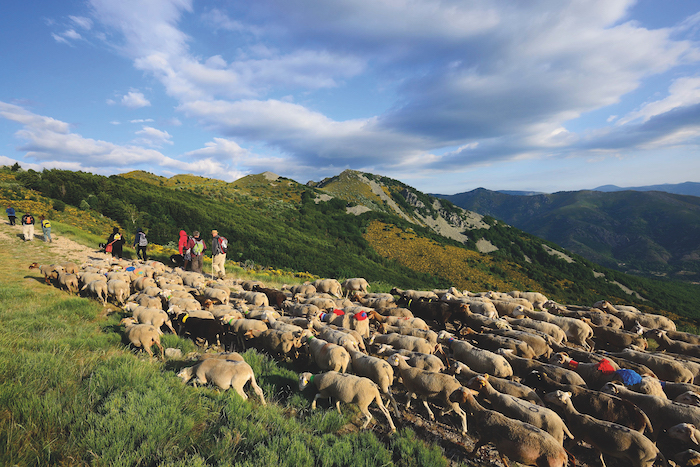
Transhumance is an important historical way of life in the area. Photo credit © Matthieu Dupont
Share to: Facebook Twitter LinkedIn Email
Leave a reply
Your email address will not be published. Required fields are marked *

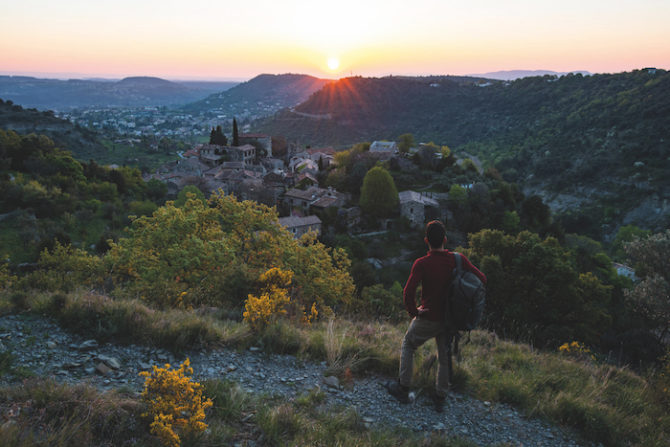




REPLY
REPLY